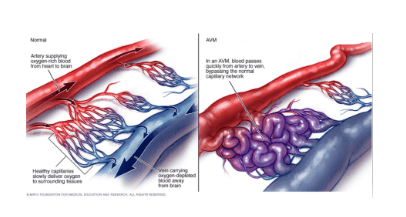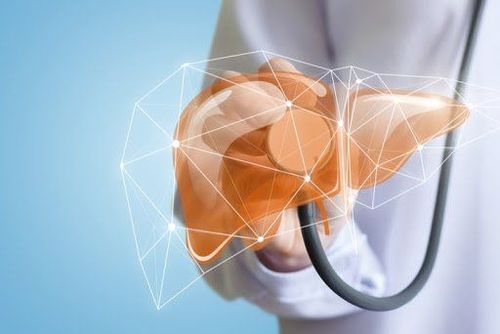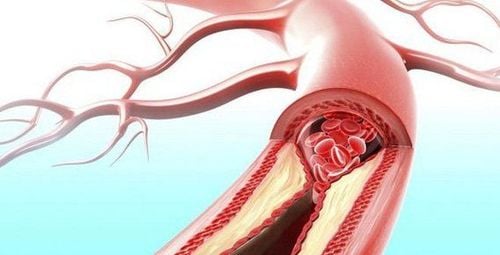This is an automatically translated article.
Article by Doctor Nguyen Kim Chung - Department of General Surgery, Vinmec Central Park International General Hospital.
An arteriovenous malformation (AVM) of the brain is an abnormality of the blood vessels that connect arteries and veins, which interferes with the flow of blood and oxygen.
1. What is cerebral arteriovenous malformation?
Arteries are responsible for taking oxygen-rich blood from the heart to the brain. Veins carry low-oxygen blood back to the lungs and heart.
When an arteriovenous malformation (AVM) interrupts this process, the surrounding tissues don't get enough oxygen. The affected arteries and veins become weakened and burst. An AVM in the brain that ruptures can cause brain hemorrhage, stroke, or brain damage.
A venous-dynamic malformation can develop anywhere in the body but is most commonly found in the brain or spinal cord. The cause of AVMs is unknown but they are rarely inherited
Once diagnosed, brain AVMs can often be treated to prevent or reduce the risk of complications

Dị dạng động - tĩnh mạch
2. Symptoms of cerebral arteriovenous and venous malformations
Symptoms of AVM vary depending on its location. Usually the first signs and symptoms that appear after bleeding has occurred include:
Hemorrhage Gradual loss of nerve function Headache Nausea and vomiting Convulsions Loss of consciousness Possible signs and symptoms Others include:
Muscle weakness Partial body paralysis Loss of coordination (ataxia) (ataxia) which can cause problems with gait Loss of coordination (apraxia) Lower extremity weakness Back pain Dizziness Problems vision problems, including partial loss of field of vision, loss of control of eye movements, or partial swelling of the optic nerve Problems such as difficulty speaking or understanding language (aphasia) Abnormal sensations include numbness, tingling, or sudden pain Memory loss or dementia Hallucinations Confusion, decreased consciousness Children and teenagers may have trouble learning or behavior.
A serious type of cerebral arteriovenous malformation called a Galen's venous (TM) defect, which causes signs and symptoms to appear early or soon after birth. Galen's TM defect is located deep inside the brain. Signs may include:
Accumulation of fluid inside the brain ( hydrocephalus ) causing the head to swell Swollen veins on the scalp Convulsions Poor development Congestive heart failure See a doctor when:
If you have any of the signs and symptoms of an AVM, such as headaches, dizziness, vision problems, and changes in cognition or nerve function. Many AVMs are now discovered incidentally, often after a CT or MRI scan for reasons not directly related to the AVM.
3. Causes of cerebral arteriovenous malformations
AVMs are caused by abnormal growth of the blood vessels that connect arteries and veins, but experts don't understand why this happens. Some changes in the genetic machinery may play a role, but most are usually not inherited.
Very rarely, having a family history of AVM increases the risk. But most types of AVM are not inherited.
Certain genetic conditions can increase your risk of AVM. These include hereditary hemorrhagic telangiectasia (HHT), also known as Osler-Weber-Rendu syndrome.
4. Diagnosis of cerebral arteriovenous malformations
To diagnose AVM, your doctor will review your symptoms and perform a physical exam.
The doctor may hear a sound called a murmur. A murmur is a sound caused by the very rapid flow of blood through the arteries and veins of the AVM. It sounded like water running through a narrow tube. The murmurs can interfere with hearing or sleep causing emotional disturbance.
Tests commonly used to help diagnose AVM include:
Cerebral angiogram. Also known as an angiogram, this test uses a special dye called a contrast agent that is injected into an artery. The dye highlights the structure of blood vessels to show them better on X-rays. Computed tomography (CT) scan. CT scans use X-rays to create images of the head, brain, or spinal cord and may show bleeding Magnetic Resonance Imaging (MRI). MRI uses magnets and radio waves to show detailed images of tissues. MRI can pick up small changes in these tissues. Magnetic resonance angiography (MRA). MRA records the pattern, speed, and distance of blood flow through vascular abnormalities. Transcranial Doppler ultrasound. This type of ultrasound uses high-frequency sound waves to create images of blood flow to help diagnose large and moderate AVMs, as well as bleeding.

Chụp MRI giúp chẩn đoán dị dạng động - tĩnh mạch não
5. Treatment of cerebral arteriovenous malformations
Treatment of AVM depends on where the abnormality is found, the symptoms you have and your overall health. Sometimes, the AVM can be monitored with routine imaging tests to monitor for changes or problems. Other AVMs require treatment. Determining whether the AVM needs treatment is related to factors such as:
If the AVM is bleeding If the AVM is small enough to be treated If the location of the AVM is in an accessible part of the brain. Medication
Medicines can help control symptoms such as seizures, headaches, and back pain.
Surgery
The main treatment for AVM is surgery. Surgery is recommended if you are at high risk of bleeding. Surgery can completely remove the AVM. This treatment is often used when the AVM is small and located in an area where surgeons can remove the AVM with little risk of significant damage to brain tissue.
Embolization is a type of surgery in which the surgeon threads a tube through the arteries to the AVM. Then, a substance is injected to create an artificial blood clot in the middle of the AVM to temporarily reduce blood flow. This can also be done before another type of surgery to help reduce the risk of complications.
Sometimes stereotactic radiotherapy (gamma Knife) is used. This procedure is usually performed on small AVMs that have not yet ruptured. This method uses high-intensity, focused beams of radiation to disrupt blood vessels and block the blood supply to the AVM.
Deciding whether to have AVM treatment is a decision that you and your doctor will carefully discuss together, weighing the benefits and risks
After you have AVM treatment, you may need regular follow-up with your doctor. doctor. You may need further imaging tests to make sure the AVM is completely resolved and that the deformity has not recurred. You may also need regular imaging and follow-up visits with your doctor if your AVM is being monitored.
To register for examination and treatment at Vinmec International General Hospital, you can contact Vinmec Health System nationwide, or register online HERE.













